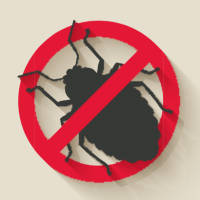Stop Hoarding Bugs and Clean Up Your Backlog

I think many testers have had or heard this conversation:
Tester: "Can we fix this bug, please?"
Project manager: "It's been open for more than six months and nobody's complained."
Tester: "Then can we close it?"
PM: "We can't close it; we might fix it."
Tester: "Then let's fix it."
PM: "We have higher priorities to work on."
Tester: "Then let's close it."
PM: "We can't close it; we might fix it."
Most companies have such bugs. Some even may have been logged by people who no longer work there. I've seen one company where they replaced their old bug-tracking tool with a new one, transferring the backlog into the new tool. Five years on they still have open active bugs that are older than their current bug-tracking tool!
This is a hoarder mentality. There are official criteria for diagnosing hoarding disorder:
- Difficulty discarding or parting with possessions, regardless of actual value
- A perceived need to save items, and distress associated with discarding them
- An accumulation of possessions that clutter the person’s life, compromising the items’ intended uses
Sound familiar? I'm not saying your development team is mentally ill, but if the state of your bug backlog is preventing your team from working efficiently, it needs to be addressed.
The Mayo Clinic uses cognitive behavioral therapy to treat hoarding disorder. They recommend making the person aware of their thoughts and feelings when thinking of hoarded items, helping to sort items and make it easier to throw away those with no value, and improving decision-making and coping skills. How does this help you clean up your company's bug dump?
I got a "Will Not Fix" state set up in my bug-tracking tool and made it a closed state. This way the bugs are not actually gone, but they are put away and not clogging the system. The information is still searchable by the team, and if the bug needs to be reactivated, it can be.
You can rip the bandage off quickly or slowly. Quickly involves bulk-editing all bugs older than an arbitrary date and setting them to WNF. The effort required is minimal, but it can raise a hoarder's anxiety levels. Slowly involves reviewing bugs from oldest to newest and marking each as WNF or putting it in the current sprint backlog. This is a more time-consuming process, but it ensures only the most important issues get fixed, and the hoarder's anxiety levels are minimized. Also, the bug is never really deleted, which can be of comfort to a hoarder.
Try setting the oldest bug in your bug dump to Will Not Fix. Include a note as to why the decision was made. How does that make you feel?
Jerry Penner is presenting the session Ditch Your Bug-Tracking Tool: 3 Solid Tactics to Minimize Bug Counts at STARCANADA 2018, October 14–19 in Toronto, Ontario.

